Naomi Moon Siegel's music reflects both the energy of urban jazz and the spaciousness of rural settings. Her early career flourished in Seattle's experimental music community, where she performed with Wayne Horvitz and Julian Priester, among others. In 2016, she left the city for Missoula, Montana, a move that reshaped her musical perspective and became central to her newest work.
Shatter The Glass Sanctuary, her third album, out on Slow & Steady Records, documents this period of change. Producer Allison Miller helped shape the recording, which features Siegel's regular collaborators from Seattle: pianist Marina Albero, guitarist Andy Coe, percussionist Christopher Icasiano, trumpeter Ray Larsen, and bassist Kelsey Mines. At the album's heart sits a three-movement suite examining isolation, connection, and the necessity of breaking through self-imposed limits.
A graduate of Oberlin Conservatory and winner of the Jazz Journalists Association's Jazz Hero Award, Siegel works beyond standard jazz forms while promoting broader representation in the field. She teaches as an adjunct professor of trombone at the University of Montana and leads workshops across the country, focusing on collaborative approaches to jazz education and performance.
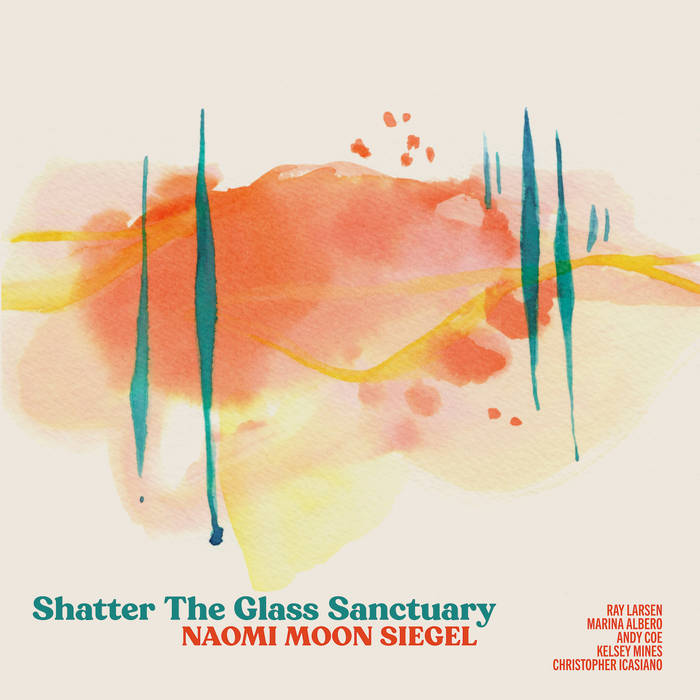
Lawrence Peryer: Can you talk to me about place? And how the places you have lived have shaped your musical sensibilities if they did.
Naomi Moon Siegel: Growing up outside of Chicago in a suburb called Oak Park impacted my musical development. I was lucky to go to public schools in a place that had robust music programs. Many people involved in those programs still play music to this day. Because of the backdrop of being in Chicago and having so much music around, it was there even if I wasn't always consciously absorbing it.
I would listen to a lot of gospel radio stations. There was the Jazz Showcase, the HotHouse, and the Jazz Festival every year in Grant Park. There was just a lot of access to cool music. My parents are really into music, so I absorbed it passively from a young age.
Western North Carolina had a huge impact on my development as a person. Everything was a creative possibility. Listening to water, wind, and birds, and that sense of community when backpacking and camping with other folks.
I used to do a lot of whitewater canoeing in Western North Carolina and being in a tandem boat with someone. You learn how to communicate, or you swim [laughter]. Those two places feel like the strongest of places in terms of my development.
Lawrence: Were you exposed to any of the regional music of the Carolinas?
Naomi: Not really. I was pretty young when we lived there. I would go back in the summers a lot. There were square dances every week, but that was about it. A lot of singer-songwriter bluegrass stuff, but I wasn't deeply into it.
Lawrence: When did you pick up the horn?
Naomi: I was 10. It was 5th grade—the opportunity to play music at elementary school. I chose the trombone. I resonated with the range—very lyrical, voice-like. I thought the slide was super cool.
I played piano before that and was excited to play a wind instrument.
I also had two older brothers who played trumpet and saxophone and were deeply involved in the jazz programs. I always looked up to them and enjoyed watching their big band performances. I didn't want to play the same instrument that they played.
Lawrence: That's quite the battery, though. The three of you, like that's pretty good. Talk to me a little bit about coming west. Why Oakland? What was there when you got there for you musically? And ultimately, what drew you here to Seattle?
Naomi: After I graduated from college, most of my friends who were musicians were either moving to New York or moving to the Bay Area, and I felt called to the West. I had gone there once. College break was the first time I spent on the West Coast, and I realized that you could have city, mountains, and nature together. I also had the opportunity to teach at the Stanford Jazz Workshop right out of college, like a two- or three-week summer program.
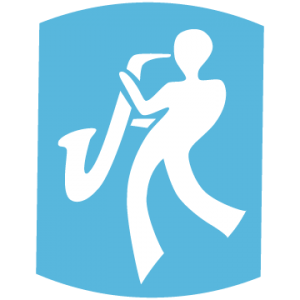 Stanford JazzStanford Jazz parent
Stanford JazzStanford Jazz parent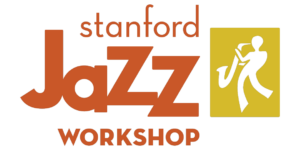
I went out to do that, and I just stayed and started playing with folks and gigging out there. It was a wonderful way to get started as a professional musician. But then I injured myself. I had a nerve issue in my hand.
I didn't know how to do my life there without playing music. I struggled with some depression. It was a challenging time. I learned that my music community wasn't necessarily the most supportive friend community.
I was dating somebody living in Seattle then, and I also had another close friend here. So, I ended up moving here to be with that person. I could start playing again after I had lived here for about a year or so.
Lawrence: Did you have to adapt physically? Did you have to change technique or anything?
Naomi: I had been doing PT for a while, and when I felt ready to play, I started taking Alexander Technique classes to hopefully not redo the same thing again. I've been successful in that, but it is an ongoing journey to find ways to support what I do physically as a profession.
 The Complete Guide to the Alexander Technique↓
The Complete Guide to the Alexander Technique↓
The trombone is very asymmetrical; it takes an immense amount of air. My whole body is a bellow, and I'm always looking for ways to counterbalance and support that physical journey.
Lawrence: Is there anything meaningful to compare and contrast about the two scenes of the Bay Area and Seattle?
Naomi: It's all so personal in terms of outlook on a scene. One of the things I struggled with in the Bay Area was that everything was so spread out. Living in Oakland, I could be doing a gig in Marin or San Jose; it was all fair game. That felt like a lot of driving.
It was interesting because I knew nothing about the music scene when I moved to Seattle. I knew no musicians, but I was pleasantly surprised when I arrived—and my outlook was different. When I got to Oakland, I'd play with anyone and do whatever. And I felt by doing that, I sacrificed my sense of self.
When I moved to Seattle, my outlook was that I would play music with people I feel like I can be myself with, who love and support me. It felt more about the relationship. In Oakland, I feel like I was conditioned from college to believe that it was more transactional, and I just had to put up with whatever and do whatever I could to play.
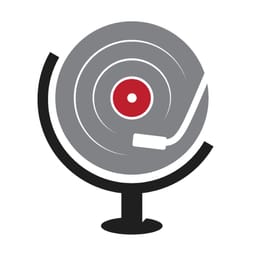 The TonearmLawrence Peryer
The TonearmLawrence Peryer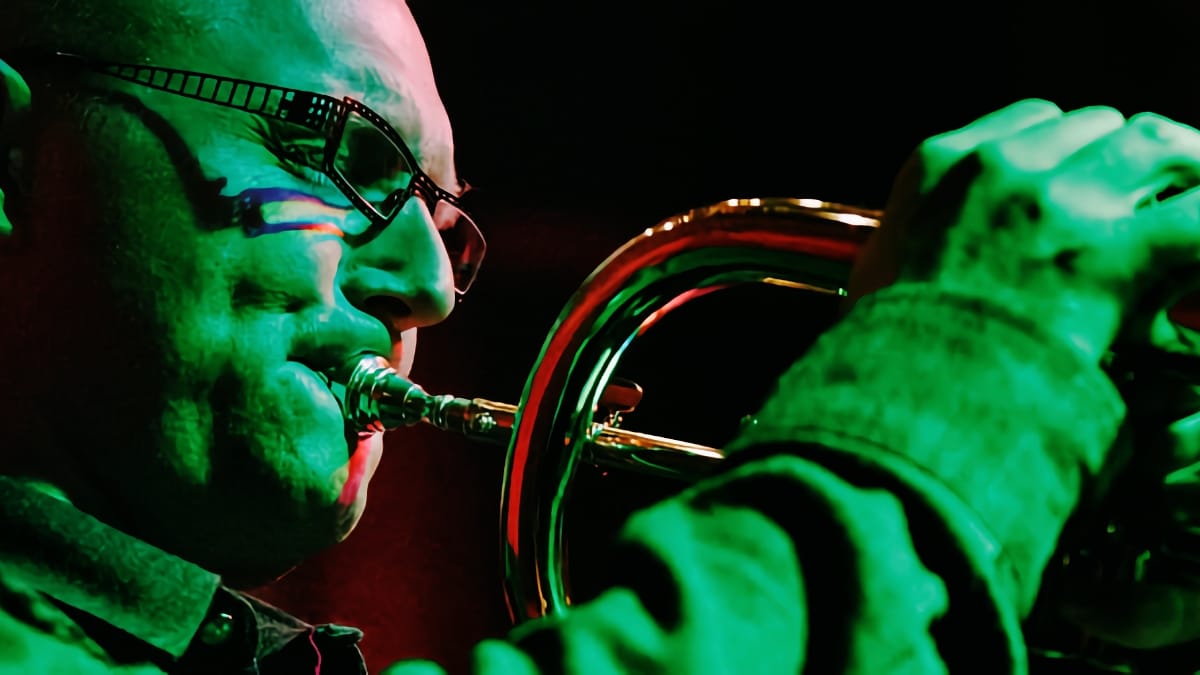
Lawrence: It's interesting you say that because though my sample size is relatively small, and I know I'm not in the artistic community here, I sense a bit of the warmth in how artists I've observed treat each other here. That is the way everybody's in everybody else's projects. You get to see people in various contexts, which is fun as a listener.
Naomi: Yeah. I love that. I can also think of some folks here who are playing who aren't having that experience. Maybe younger folks or others who feel it's harder to break into the scene. I think it just depends on personal experience. I feel very positive about my experience in the Seattle music scene and being able to find people to collaborate with who pushed my growth and inspire me and also want to support my projects.
That's why I keep coming back here a lot to play and hire musicians from here.
Lawrence: When you arrived in Seattle, were there particular places, nights, or people that were a way in for you? How did you connect?
Naomi: When I first moved here, I got a job helping to run an afterschool music program called Seattle Music Partners. I started as an AmeriCorps employee and then became their education director. That was a great way to get to know the city's landscape because we were recruiting volunteers from far and wide, and I visited all the high schools and met all these band teachers.
That was a great way to get to know the city and learn more about the inequities in Seattle Public Schools. One of my first gigs in Seattle was with somebody I collaborated with through Seattle Music Partners.
 YouTube
YouTube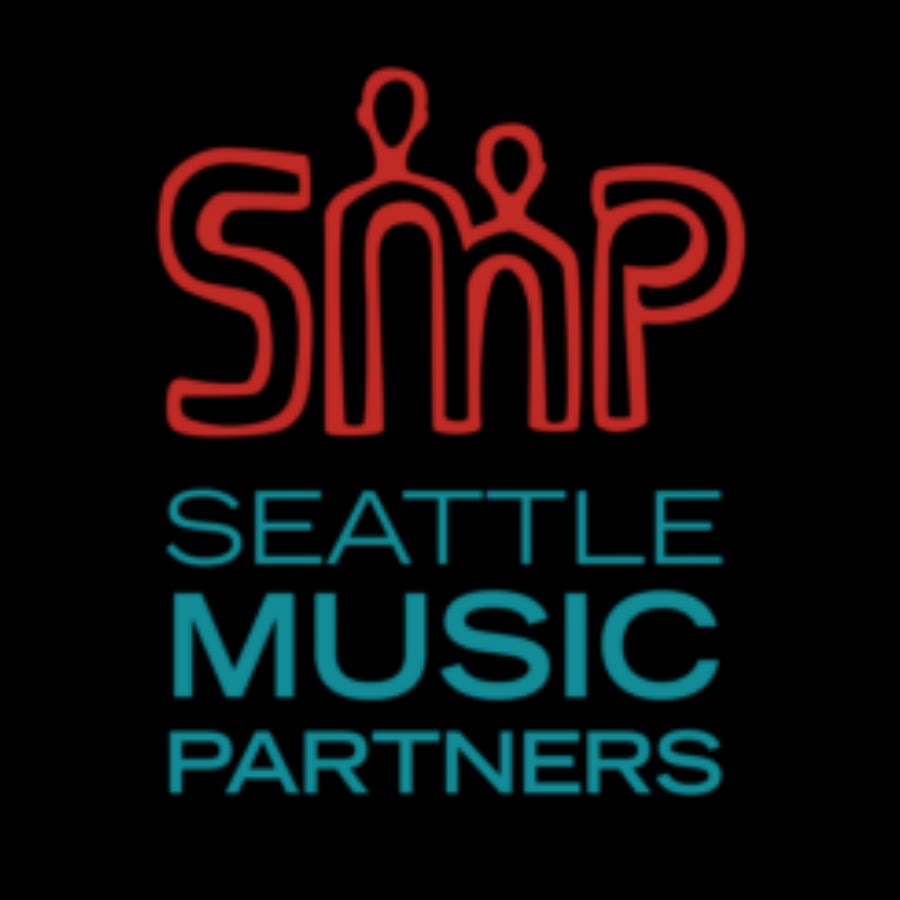
In terms of places, I used to go to The Ritz. That was one of my favorites because it felt like a place where people listened to each other and pushed the edge. Faire Gallery and Cafe was this place on Capitol Hill that had jam sessions sometimes. LUCID was a place in the U District. I used to sit in at the old Sea Monster with McTuff, Joe Doria, and those guys. The Triple Door Musicquarium used to have a lot of great music.
Lawrence: When you went to those places when you arrived, did you just show up?
Naomi: Yeah, mostly I would just show up. I would start bringing my horn and chatting with people, and I felt pretty welcome.
Certain people took me under their wing right away. Hans Teuber is someone who supported me right off the bat and got me recording session gigs. Julian Priester was very warm when I first moved to town, and I called him up and said, "Hey, can I take a lesson or get coffee or whatever you want to do?" He was still at Cornish then and said, "Let's just hang, come to my office." And we would. We had sessions for a while, where we just hung out and talked. I was in that scene with his Monday night conduction band. He's always supported my music and invited me to collaborate on his projects.
Lawrence: Were you always comfortable just walking into places?
Naomi: Yeah, it's interesting. I don't remember so much about what it felt like at the time, but what has been interesting for me is to put myself back in those situations now post-pandemic, emerging into the world, going to different sessions I've been to, or playing with folks. I feel a heart-racing kind of vibe. I imagine I had that then, too, but I was just like, "This is how you meet people, and this is how you do it." So, I did it.
Lawrence: What pulled you away? Was it leaving Seattle, or was it going somewhere else?
Naomi: I went somewhere else. I was heartbroken about leaving Seattle but also curious enough to leave. My wife and I decided to leave, flip the switch, spend more time in a smaller town around nature, and then come back and visit.
We were trying to start a family at the time, and my brother's there [Missoula, MT] and has kids, and we were drawn to this idea of a tighter-knit community, easier to coordinate with.
Lawrence: What did being in Montana mean for your music? Did it change it deliberately, or does it creep in more subtly?
Naomi: I would say probably more subtly. Just like any life experience would shape anybody's creative output. That's how I feel about the music I've written since moving there. Most of my compositions feel like a way for me to process my experience in the world.
This album, Shadow in a Glass Sanctuary, is mostly music I wrote after being there for a couple of years, struggling with the transition, learning about that, and being with that in a deeper way.
Lawrence: Were you there for the pandemic?
Naomi: Yes. I moved eight years ago. I've already lived there as long as I lived in Seattle, which feels wild. But I went in 2016, right after my first album came out, and in 2020, I had a child. He's turning four next month, and I feel like I'm emerging from that experience now. We all still have a lot to process regarding the pandemic.
Lawrence: Can you tell me about the suite that is the heart of the record? What are you doing there? What's the story you're telling?
Naomi: The story is about processing my transition to living in Missoula, realizing that there were some feelings and experiences that I had been putting at bay and not coming to terms with, feelings of isolation, grief, and heartbreak, and realizing, too, that I was doing all these things that are supposed to be nourishing, like hiking in the woods, stuff that I loved and felt like I wasn't getting the nourishment from them.
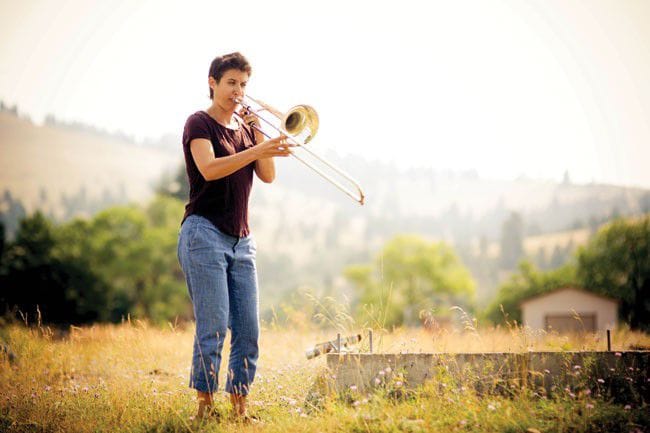
I think that was because I wasn't allowing myself to be fully present with my own emotional experience and, therefore, my surroundings. I was at a broken-down point. Processing what was going on for me and "Holding All the Broken Pieces," which is the first movement, feels like, for me, a way of just being with this, being with what this feels, holding it, getting to know the contours, the edge, the texture, and so that's what that piece was for me, an exploration into being with the broken parts of myself.
"Tethered," the second movement, was my reminder that I have connections and there are people who are willing to hold me in a depressed space. So that piece is remembering that even through all the muck and the sort of circular, dark place I found myself in there, there was connection, and even just sharing with folks about that was a source of connection.
"Shatter It," the third movement… I'd like to go back and look at my notebooks, but I almost feel like I wrote that one first. That's where the phrase "shatter the glass sanctuary," the album title, comes from. That felt like more of the catharsis of busting open and letting myself feel these things, experiencing these things, and realizing I don't need to hold things so preciously, I don't need to put things on a pedestal, and that those tendencies were preventing me from being more in the world and experiencing my surroundings and getting that nourishment.
But the phrase "shatter the glass sanctuary" has come to mean other things to me. It's an aspirational idea to remember the complexity and the nuance of the world that our social media and mainstream culture don't want us to see, remembering that things are not binary.
And remember that the real truth of the world is about paradox and holding contradictions. That's what I felt like I was learning to do at that time in my own life. Holding the contradictions? Where do I want to live? How do I want to be connected with people? How can I be connected with myself?
Lawrence: Do you have these types of conversations either as a means of briefing the band members or within your relationships with them?
Naomi: At different points, piecemeal here and there. For example, [guitarist] Andy [Coe] takes a solo in "Holding All the Broken Pieces." I told him, "I want your voice to come through. And here's where this piece comes from, in case that adds any content for you."
So yeah, it has come up, but I don't beat it over the head. But they hear me share about it in performances too.
Lawrence: The interludes, "Breath in" and "Breath Out." Can you talk about those titles?
Naomi: Yeah, for the longest time, I didn't call them anything. We just played them. And then, for purposes of this album, I was like, "How do I want this album to live in the world?"
It was just in the process of mastering the tracks for the album that I chose those titles. They're segues to me, they're transitional moments. What does interlude mean? It's a pause or a transition. It felt right to include names instead of just calling them "Interlude 1" and "2".
Lawrence: What do you see in terms of gender in your role as an educator? Are you seeing more diversity with young people? How can that be fostered?
Naomi: I think it has to be fostered in every way imaginable because I believe the story is so strong that it says, "Only certain people are meant to play this music or this instrument."
I think we all need to do our work. I would say especially men, cis men, who I don't always know. They program one concert with a woman composer and are good to go. "Look what I did."
There have always been innovative composers, instrumentalists, and arrangers. Reiterating that as much as possible, so that there's never a concert that you go to where there's only men on stage, or there's only male composers represented on the program, I guess when I say that it feels a little bit like I'm trying to fill a quota, but I just feel like I'm trying to tell a story. It's an accurate story; we could all take that on.
There are a lot of cultural things we have to address in terms of daily microaggressions that a lot of women face in the band rooms, on stage, and growing up that are alienating and might contribute to the lack of gender diversity. That's where I see a lot of men could be coming together to talk about this and say, "How could we support more of an inclusive environment?"
I also think we often teach jazz by adhering to this patriarchal approach that was easy to sell, such as when jazz education became a sellable Jamey Aebersold vibe.
Lawrence: Can you unpack that for me?
Naomi: Jamey Aebersold was, at least to my knowledge, one of the first big jazz, national jazz educators, and he held these camps every summer, and he had all these books… he was the first person to make play-alongs that people could practice, blowing over changes on and stuff like that.
I mention him because jazz education became a commodity at a certain point. What was lost there was the direct reference to why, culturally and philosophically, this music existed—and learning more directly about the Black American experience and music tradition.
I think it also approached and still approaches jazz and jazz improvisation as a very virtuosic thing, with certain aesthetics in terms of fast, loud, high, and dense, that tend to be celebrated more and often at the expense of listening, collaboration, communication, storytelling, which is the music I find more interesting.
You can have both things together, and then it's really fun. Those are some of the ways I think we could address the issue.
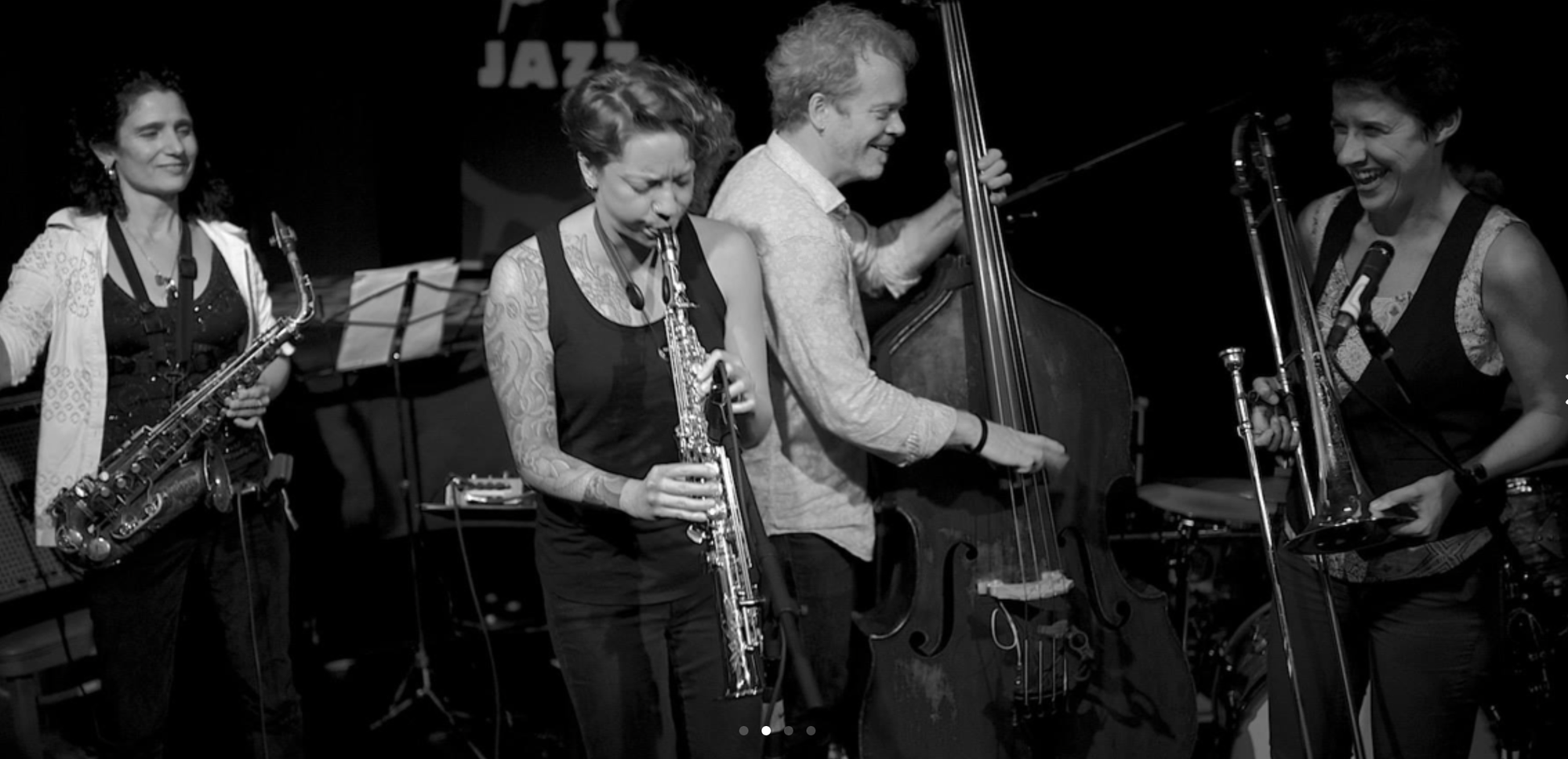
Lawrence: As an audience member, I see it more on the bandstand. I feel like, as part of what I do here, I see more diversity, but I'm a 53-year-old white man. I hope it is not just me seeing what I want to see, but I think there's something there. I hope there's something there.
Naomi: Yeah, it's so different than when I was in college, and nobody was talking about this.
As we were coming out of the '90s, everything was supposed to be good. We were cool. Racism wasn't a thing. I just think I grew up in this false world. And what that meant was that we didn't talk about the issues. And it just felt like it was in the air we breathe. And that's what I felt like I had to deal with.
That's what I did when I moved to Oakland and started playing. I said, "This is just what I have to deal with." But I've learned that even as we might come across discrimination or microaggressions or things that don't allow us to be ourselves, this music ultimately is at its best when we're vulnerable.
There are people and scenes out there that you can find; the first one you play in might not be the one, but that was my goal when I moved to Seattle.
Lawrence: About a year ago, I talked to the pianist, Kris Davis, and she spoke about the work she's been doing at the Berklee Institute of Jazz and Gender Justice. One of the really interesting things they're doing is they have assembled a new fake book comprising compositions of female artists. And, of course, that's a great idea. It's such a practical, brilliant step to create a new canon. The material's there. There are 80 years or more of music to pick from.
 WMKYNoah Caldwell
WMKYNoah Caldwell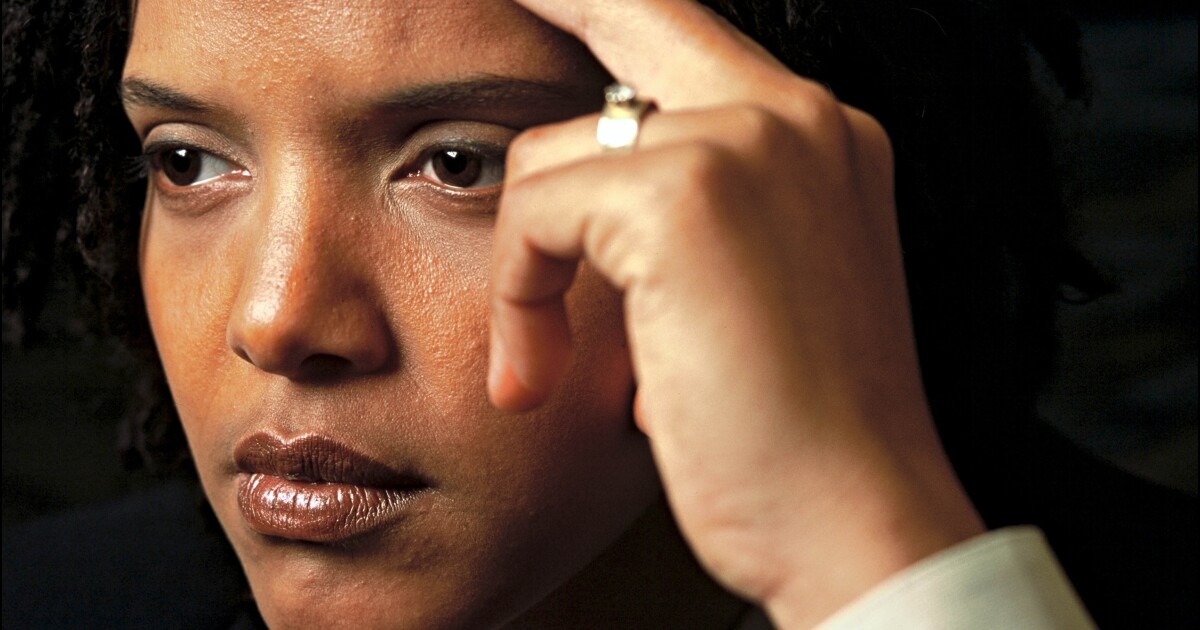
Naomi: I hope they keep doing more because that book is great. I've been pulling a lot of stuff from that book. They did one song from each composer. I'm ready for more, too.
Lawrence: So, as an educator and an advocate, can you feel how these other aspects come into your creativity?
Naomi: Absolutely. One of the things I mentioned to you earlier was learning how to use my body and be with my body, which became very important in my early twenties. And frankly, one of the things that I think is missing, and it's happening more now, but was missing in my music education, was a connection to the idea of being an embodied person. What does it mean to have this body that plays this instrument? That's been a big part of my journey. I mentioned the Alexander Technique class, but when I lived here in Seattle, I was deeply involved in Seattle Yoga Arts.
I mostly did teacher training there to deepen my practice and learn more about it. Still, I could counteract some physicality of playing the trombone and learn new ways of body awareness. The trombone is a very outward instrument. Our bell points out; our slide goes way the hell out. When we're performing, there's so much energy "out" that it can be unbalancing. One of the things I've been working with for a while now is keeping awareness in my feet, in the back of my body, and in the space behind me at any given moment to be more energetically balanced as a performer.
When I can do that, which isn't always the case, as humans, we forget and remember, but when I do that, I can be more present with my bandmates on stage and be more present as a listener. I don't feel like I'm pouring as much energy just "out." I might still give a lot to the audience, but it's balanced and more sustainable.
So, that embodiment is really important to me. I'm not so involved in yoga these days, but I've been learning other ways of approaching breathing from a physical therapist lately. And I'm starting to do strength training these days.
All that stuff is important in my music, its physicality. Also, in my teaching, I try to bring that embodiment, that peace.
I also feel curious about trying to teach jazz and music in a less hierarchical, patriarchal way: "Here's the featured soloist, and that's what it's all about."
I try to find other ways to learn how to improvise collectively. We need to work on our listening as an ensemble. Or have the horn players play the role of the rhythm section. Just stir things up in that way. I think that can provide more of an access point to jazz and music to more folks, as opposed to the environment that favors the people willing to say, "Hey, I'll stand up and take that solo."
It's cool, but it's not going to work for everybody.
I feel interested in that aesthetically as well. How does that change the way we play this music? How does that change the way we play as an ensemble? This is a chance to tell a story together. This is about communication and groove.
Lawrence: Have you put any instruments in the hands of your little one yet?
Naomi: Oh yeah, we've got a lot of stuff around, and I try not to pressure it, but we have a little. He has a little miniature trombone; it's like a plastic trombone. We have a piano. We play some drums and ukulele, so we're pretty loose.
Sometimes, he'll play right next to me, like when I play. Sometimes, he'll be in the audience. He's a great audience member. It's really fun to share music with him.
Lawrence: One of the most beautiful things about having kids is sharing music.
When you're back in Washington State later this month, and when I look at the schedule, your run of shows looks like one of those Bay Area runs you were talking about. You're covering a lot of geography here in a short time. Will this be the Sextet that's on the record?
Naomi: Yes. That's our official album release tour, with the full Sextet playing in Bellingham, Seattle, North Bend, and Bainbridge Island.
Lawrence: That's exciting.
Naomi: It'll be nice to get the whole crew together. I had them out in Montana in May; it was a treat.
Naomi Moon Siegel will be performing live in Western Washington State: November 20 - Jazz Center of Bellingham (Bellingham, WA) November 21 - Seattle Jazz Fellowship (Seattle, WA) November 22 - Boxley's (North Bend, WA) November 23 - WEAVE (Bainbridge Island, WA).
Check out more like this:
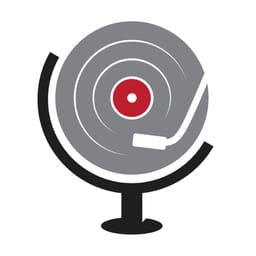 The TonearmLawrence Peryer
The TonearmLawrence Peryer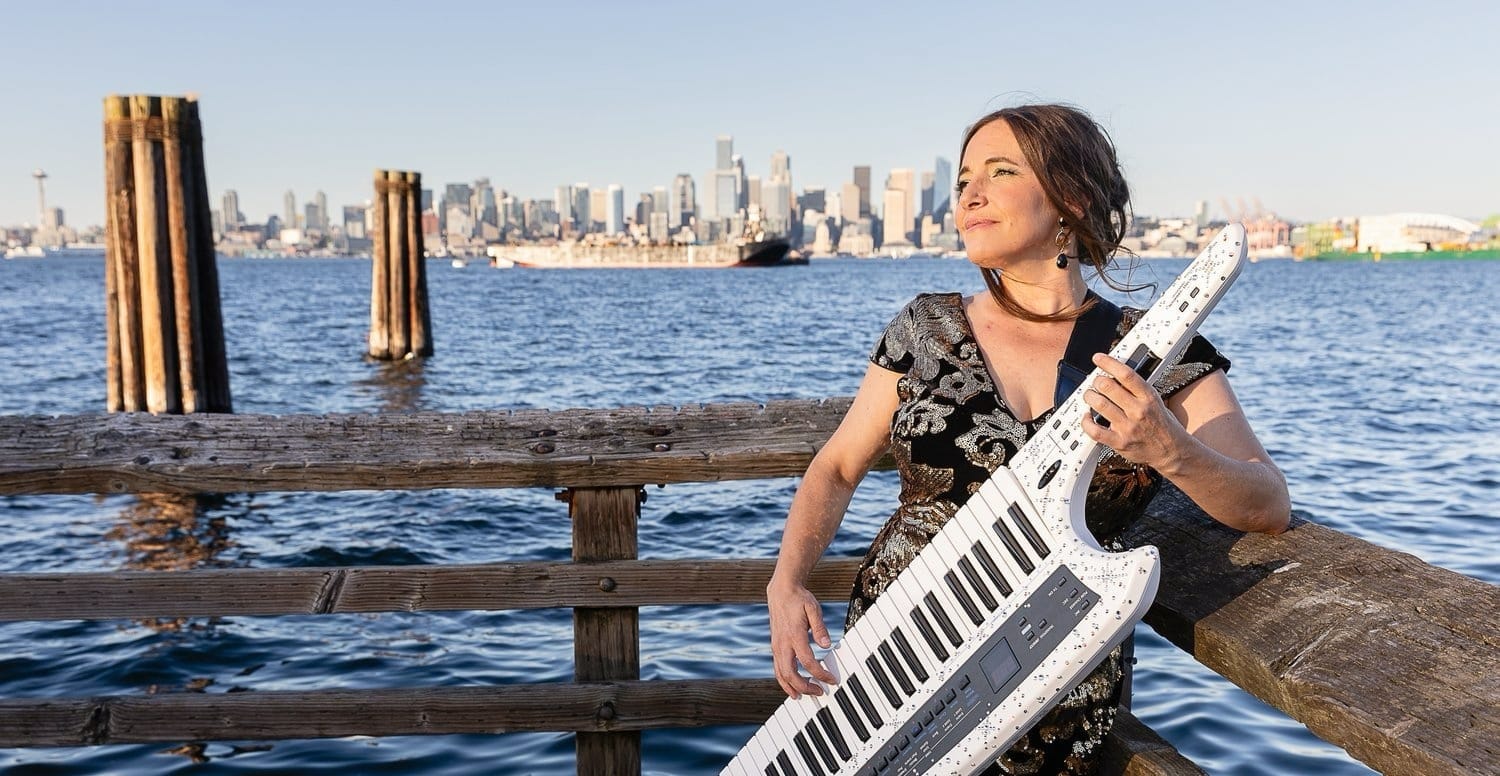
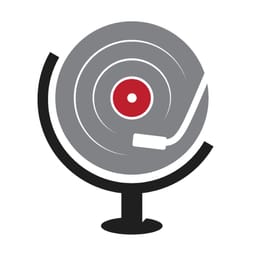 The TonearmSara Jayne Crow
The TonearmSara Jayne Crow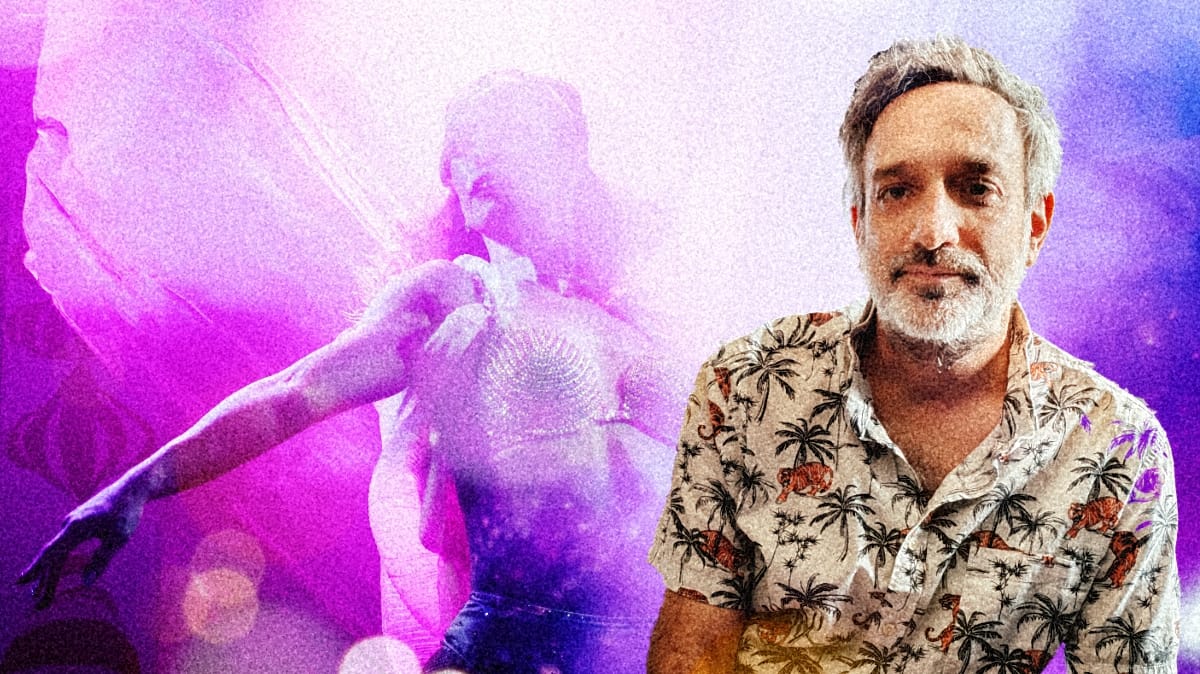


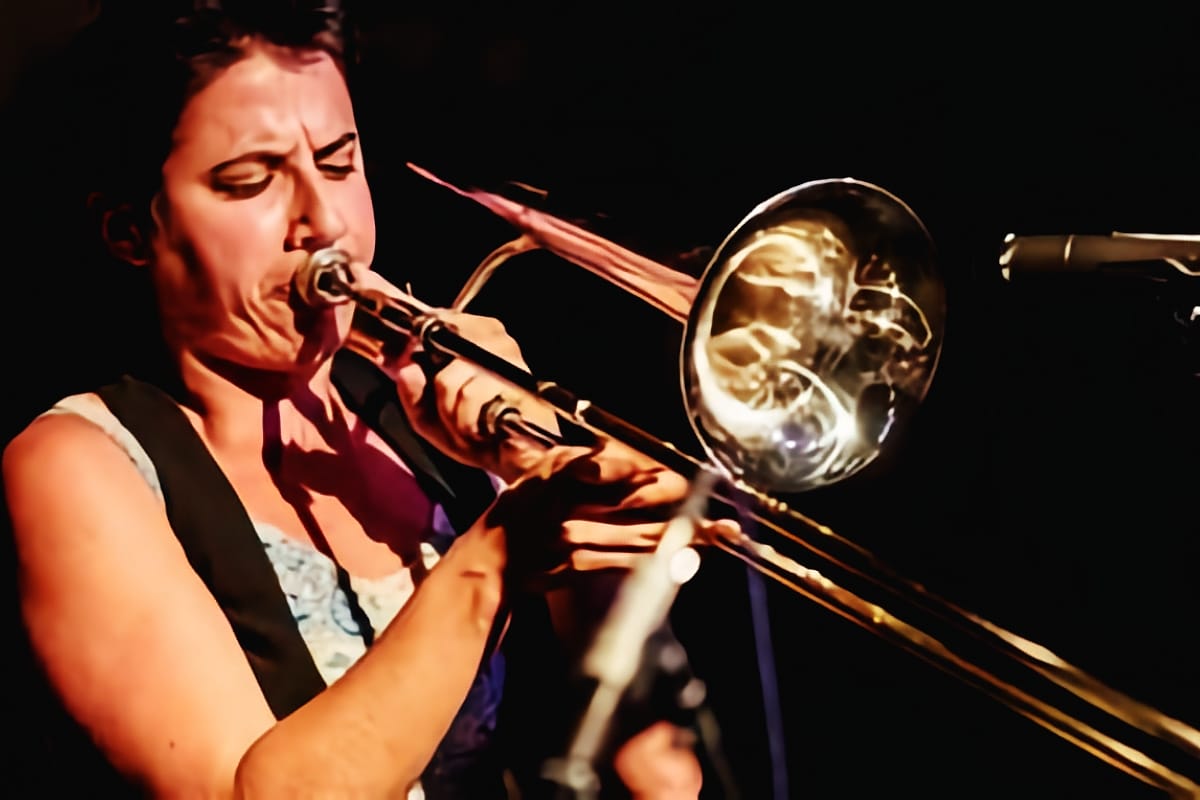
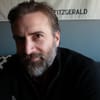



Comments